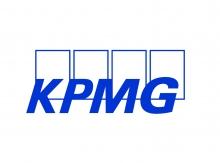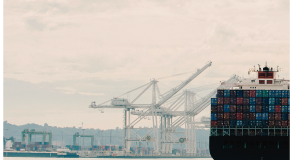The North American Free Trade Agreement (NAFTA) is at least as controversial today as it was almost 25 years ago, when it went into effect. One outcome that is hard to dispute, however, is that it created one of the most powerful cross-border trade partnerships in the world. Dozens of industries, including medical devices, automobiles and auto parts, oil and gas, textiles and even aerospace components, have expanded their production facilities across the borders of the three partner countries. This expansion has created new supply chains that allow them to tap cheap labor and other cost efficiencies.
Future in doubt
Since renegotiation of the terms of NAFTA began in August 2017, the future of this burgeoning economic community has been in doubt.[1] Many of the preliminary objectives the Trump administration announced would simply update the agreement and bring it into line with U.S. positions on other trade treaties. These would include further opening the Canadian and Mexican markets to American goods, streamlining customs processes, toughening labor and environmental standards, ending discrimination against foreign suppliers in services like telecom and banking, and securing commitments not to impose customs duties on digital products.
Other U.S. demands are more worrisome. NAFTA’s most important feature is the provision of “national” status to goods produced in any of the three countries, meaning that no state, provincial or local governments can impose taxes or tariffs on them. Under renegotiation, the advantages this affords could be diluted in numerous ways.
U.S. negotiators want to widen Washington’s latitude to make and enforce its own trade laws. They seek to tighten rules of origin, make sure these rules “incentivize” the sourcing of goods and materials from the U.S. and strengthen their enforcement. The U.S. also wants to replace NAFTA’s Chapter 19 settlement mechanism for trade disputes with what it says would be a more transparent process.
U.S. Commerce Secretary Wilbur Ross and Peter Navarro, White House director of trade and industrial policy, have also maintained that Mexico’s VAT tax disadvantages U.S. companies that export to that country. It encourages them to move their production facilities there—Ross and Navarro argued in a report released during the 2016 presidential campaign—because Mexican producers receive a VAT rebate when they export goods. “This turns the VAT into an implicit tariff on U.S. exporters over and above the U.S. corporate income taxes they must pay,” they wrote.
Further complicating negotiations are the White House’s recent announcement of higher tariffs on steel and aluminum, while Mexico and Canada will be exempt from these tariffs. “It’s not clear what the implications of this are,” says Michelle Schulz, who heads the international trade group at Akerman LLP. “How will that exemption be incorporated into the revised NAFTA text? Will all the same general rules that apply to other products [under the treaty] still be applied to steel and aluminum, or not?”
Supply chains at risk
“What I’m seeing from my clients is that they are very concerned and they are watching, because there has been no discussion of how this plays out,” says Schulz, who works with manufacturers and distributors, oil and gas producers, and aerospace and defense contractors, many with operations in Mexico. Forty percent of U.S. light-vehicle exports in 2015 were shipped to NAFTA partners while 51% of the value of auto parts imported to the U.S. came from NAFTA partners, according to the U.S. International Trade Administration.
A perspective from KPMG
NAFTA has driven corporate strategies and capital allocation for 25 years, creating a complex supply chain structure across North America. But many of the original benefits of NAFTA, including reduced labor and manufacturing costs across industries, have decreased, in some cases significantly. Going forward, companies will need to allocate new capital, using a new lens that considers the ever-evolving consumer, automation and robotics innovations that are driving labor costs out of production globally and increased regulatory compliance requirements for tracking Rules of Origin, tariff and tax rates across their product portfolios.
Low-cost labor and manufacturing regions are becoming less compelling as manufacturers continue to drive automation into their production systems. The bigger concern going forward is to align with where your customer is located, in areas of geopolitical stability with highly skilled workers for the labor remaining in a facility. New, multi-decade investments will need to consider proximity to the customer base and whether there is investment risk from political or regional instability relative to the potential tax and trade benefits.
Companies should not let trade and customs or tax policy drive capital allocation and growth strategies. However, a favorable trade or tax policy can be icing on the cake. What we’ve seen over the last 25 years with NAFTA is that companies’ investments and capital allocation in manufacturing and supply chain capabilities have been greatly influenced by the agreement. One only needs to look at the footprint of pre-NAFTA manufacturing in North America and how quickly regions of Mexico and Canada were transformed.
Given the uncertainty around potential changes in Rules of Origin, the compliance needs associated with those standards, and the new, globally competitive U.S. tax policy, companies need to do three things:
- Quickly assess their current footprint for products and services that are at risk from new tax and tariff scenarios.
- Assess potential projects and investments that might require a different ROI calculation in a post-NAFTA world.
- Understand their ability, relative to their competitors, to react to these potential changes.
In a capital-intensive manufacturing and supply chain business, it’s difficult to change direction overnight—but that may be exactly what your customers and the market demand.
Business leaders are concerned that more stringent rules of origin could complicate or even destroy supply chains both within North America and those that include producers from outside the NAFTA zone. For instance, President Trump has asked for a package of up to $60 billion in new duties on a wide range of Chinese imports. If Washington accompanied this with demands for stiffer rules of origin on Chinese goods as part of the NAFTA revision, the result could be higher duties on some Mexican goods that are made with parts or materials imported from China, Schulz says. Some producers might then decide to relocate production and jobs from China to Mexico to avoid the duties, she adds.
Should the three countries fail to agree on a revised NAFTA deal, officials have stated that it could be abandoned. “If we can’t make a deal, it’ll be terminated and that will be fine,” President Trump said in October. This would mean reverting to the tariff regime that existed pre-1993, with one or more of the three nations jacking up duties in response.
If the 8th round of talks, scheduled to begin in April, don’t result in a new agreement, they could pause and restart in 2019 to make way for the election cycle in the U.S. and Mexico. A new, possibly more economically nationalistic, government might be in power in Mexico by then.
Preparing for change
Given the uncertainty that has been injected into NAFTA’s trade edifice, how should U.S. companies – especially those with manufacturing facilities in Mexico and Canada – prepare and protect themselves?
The first thing, says Schulz, is to “conduct a thorough duty qualification analysis. Understand the numbers. For example, review the NAFTA compliance procedures in your company’s Import Compliance Manual. Should NAFTA collapse, how would a new tariff regime, or a reversion to previous rules, affect your company?”
Tightening rules of origin
NAFTA’s Rules of Origin, which the administration wants tightened, present the greatest difficulties. “President Trump wants much more rigid requirements to qualify for duty-free treatment,” notes Warren Maruyama, partner at Hogan Lovells, who helped develop NAFTA under President George H.W. Bush. “North America already has the tightest rules for automobiles of any free-trade agreement,” he adds.
According to the agreement, 62.5% of the materials in vehicles must be manufactured in the country of origin, and the administration has floated a figure as high as 85% to replace it. Either way, enforcement is likely to be tightened.
“A large percentage of importers make errors in origin determinations,” says Schulz, noting that companies often assume that nobody is checking. “You need to go in and self-audit. Make sure your certificates attesting that your products are NAFTA-qualifying are filled out properly. If they’re not, you may run into problems.”
Should the negotiations produce a more stringent deal—or one that gives each member state more room to prioritize its own goods and services—or should NAFTA simply collapse, companies will be looking for ways to soften the blow. Schulz suggests that U.S. negotiators could build a grace period into a revised deal, giving companies time to reorganize their supply chains and revise their manufacturing strategy. “But they’ll also have to adjust to whatever Canada and Mexico do in response to U.S. demands,” she adds.
Schulz also suggests that Washington might look at expanding Chapter 98 of the U.S. Harmonized Tariff Schedule in ways that help manufacturers. Chapter 98 grants reduced duties to exporters that re-import qualifying goods back into the U.S., e.g., goods exported only for temporary use abroad or that are returned temporarily for repair or alteration.
Alternative sources
Many companies will search for alternative sources, for instance in Central America and the Caribbean, where the U.S. has free-trade pacts in force, Schulz suggests. One outcome of a NAFTA transformation, then, may be that supply chains continue to become more global and geographically spread out in scope.
“We want to produce in the regions where our products are being consumed – but not always,” Jeff Smith, then president and CEO of GHSP, a Michigan-based manufacturer of electronic pumps and transmission parts, said last fall. GHSP anticipated $410 million in 2017 sales, $50 million from its 10‑year-old operation in Saltillo, Mexico. “But there may be other regions where they have the capacity and the cost structure to supply the globe.” GHSP has production facilities in Shanghai that predate its Mexican operations.
Smith, like other manufacturers, said he still hopes NAFTA will remain in force and that any changes to the agreement will be minimal. Even if that is not the case, most observers do not expect manufacturers to abandon Mexico, given its proximity to the U.S. and the size of the U.S. market. The earlier Canada-United States Free Trade Agreement would remain in force, and Mexico could choose to fall back on the low tariffs it instituted even before NAFTA was signed, rather than retaliating.
“We see it as a continued region for growth,” Smith said. While Ford and Nissan are its biggest customers in Mexico, GHSP “has enough other business, depending on the component, and we’re starting to produce for other OEMs there as well.”
Making the right choice—whether to remain in Mexico or Canada, to reshore operations to the U.S., to locate them elsewhere outside NAFTA, to refocus on selling into other markets—requires U.S. companies to carefully reevaluate their position within the three markets. This includes assessing your company’s compliance with NAFTA’s existing rules, evaluating the impact of tightened rules of origin, exploring alternative sourcing strategies, and making your voice heard as the terms of a new deal—or the prospects of a collapse—unfold. Because of the stability and certainty that NAFTA once provided, many will be doing so for the first time in many years.
[1] Discussions on renegotiating NAFTA have continued into early fall 2018. On August 27 the U.S. and Mexico reached a deal to revise the accord. Talks with Canada are ongoing.








